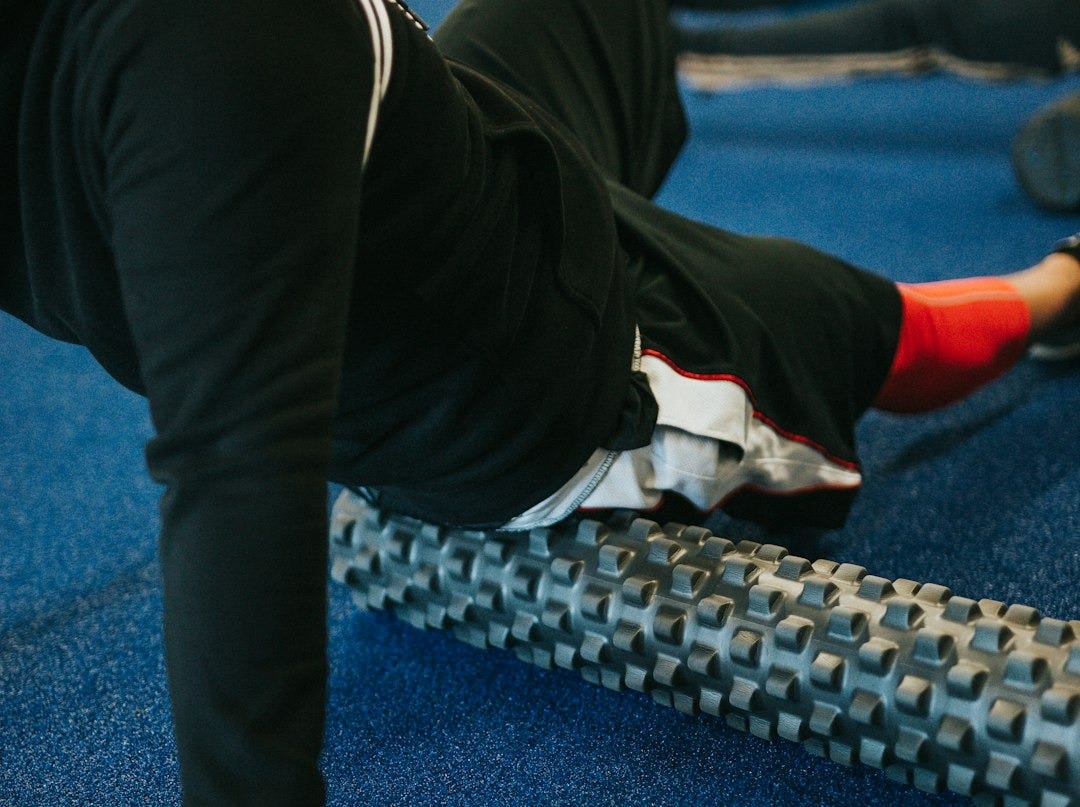
At-Home Trigger Point Care
What are Trigger Points?
First lets go over what trigger points are. Trigger points or “knots” are hyperirritable spots, palpable nodules in the taut bands of skeletal muscle fascia. They are able to produce referred pain away from their location and direct compression or muscle contraction can elicit a “jump sign”, local tenderness, and a local twitch response.
If someone where to lobster pinch on your traps right now, would you flinch or jump?
The shoulders are a common place where people hold stress and this is partly because your trapezius muscle is innervated (fancy word for saying “the nervous system connects to”) by a nerve that directly connects to the brain: Cranial Nerve 11. Have you noticed people who are under stress tend to have their shoulders raise up to their ears? That’s a protective mechanism. The body is protecting the neck and head by raising the shoulders up to the ears.
Most people I’ve talked to don’t know that there are two types of trigger points. The one people know often is the Active trigger point which cause spontaneous pain and referred patterns even when they aren’t being touched. The lesser known one is called the Latent trigger point, which don’t cause spontaneous pain but can restrict movement and cause muscle weakness. That muscle weakness is your body trying to protect you from putting yourself in a compromised position.
What causes Trigger Points?
Generally speaking the causes fall into these categories: Overuse, underuse, compensation patterns, trauma, and nutritional deficiencies.
Overuse: This is typically when we do the same movements repetitively throughout the day (think hair dresser or office worker) and/or over training. This also applies to chronically holding tension in the body, whether from stress, anxiety, and/or depression.
Underuse: This results from being inactive and the muscles have atrophied (fancy word for weakened) from lack of use. The glutes (butt muscles) are often atrophied if all we do is sit (school, desk jobs, etc.) and this can lead to back pain because one of the glutes’ main jobs is to keep us upright when we are standing but when they have atrophied from sitting, the low back muscles and hamstrings pick up the slack.
Compensation Patterns: This could be from a variety of different reasons like lack of coordination, focusing on one muscle group in the gym, injury/trauma, sedentary lifestyle, trying to do too much, trigger points from underuse or overuse. The list can get really long if you try to list all the possible causes of compensation patterns.
Trauma: This one is seems pretty self explanatory. Some examples of are - injury playing sports, a fall, getting rear-ended, or anything that follows the phrases “hold my beer” or “I can do that” haha


Nutritional Deficiencies: If your body doesn’t have the resources to perform it’s necessary functions then this can lead to the development of trigger points. Here’s a short list of the nutrients you need for muscles to contract.
Calcium (Ca2+): Calcium is essential for the excitation-contraction coupling process in skeletal, cardiac, and smooth muscle. It binds to troponin C, causing a conformational change that allows actin and myosin to interact and produce muscle contraction.
Magnesium (Mg2+): Magnesium is a crucial mineral that plays a multifaceted role in muscle function. It competes with calcium for binding sites, regulates electrolyte balance, facilitates energy provision, and supports anti-inflammatory and antioxidant defenses. Adequate magnesium is necessary for optimal muscle contraction and relaxation.
ATP: The hydrolysis of ATP provides the energy required for the cross-bridge cycling between actin and myosin, which is the fundamental mechanism of muscle contraction. Magnesium is also involved in stabilizing and activating cellular ATP molecules.
Potassium (K+): Potassium is essential for maintaining the proper electrolyte balance, which is crucial for regulating membrane potential and supporting muscle contraction functionality. It helps stabilize the muscle cell membrane and prevent fatigue.
B Vitamins: The B vitamins, including B1 (thiamine), B2 (riboflavin), B3 (niacin), B6 (pyridoxine), and B12 (cobalamin), assist in the utilization of macronutrients for energy production, which is necessary to support muscle contraction.
Self-Care Techniques for Trigger Points
What type of Foam Roller is right for you?
Using a Foam Roller for Trigger Points
Foam rolling, also known as self-myofascial release (SMR), is an effective technique for releasing muscle knots or trigger points. Here's how to use a foam roller for this purpose:
Identify Trigger Points: Run the foam roller over the muscle group you want to target and look for any tender or painful spots - these are likely trigger points that need attention.
Apply Pressure: Once you've located a trigger point, stop rolling and apply pressure to the area by resting your body weight on the roller. Hold this position for 30-60 seconds, or until the pain/tenderness subsides by about 50-75%.
Slow Movements: After holding the pressure, slowly roll back and forth over the trigger point, stopping to apply more pressure as needed. This helps break up the adhesions in the muscle. Depending on where you’re working, you can move your arm or leg into different ranges of motion to access different parts of the muscle belly.
Breathe Deeply: Remember to breathe deeply throughout the process. This can help your muscles relax and release the tension.
Repeat on Other Areas: Move the roller to target other trigger points in the same muscle group or surrounding areas. Spend 1-2 minutes per body part.
Progression: For a more advanced technique, try "pinning" the trigger point by contracting the opposing muscle group as you roll. This helps actively lengthen the restricted tissue.
10-minute Full Body Foam Roller Routine for Active Individuals
Using a Massage/Lacrosse Ball for Trigger Points
This is just like using a foam roller, but it is a more focused approach and can get into areas that may not be easy with foam rollers. Here's how to use a massage/lacrosse ball for this purpose:
Identify Trigger Points: Roll the ball over the muscle group you want to target and look for any tender or painful spots - these are likely trigger points that need attention.
Apply Pressure: Once you've located a trigger point, stop rolling and apply pressure to the area by resting your body weight on the ball. Hold this position for 30-60 seconds, or until the pain/tenderness subsides by about 50-75%.
Slow Movements: After holding the pressure, slowly roll back and forth over the trigger point, stopping to apply more pressure as needed. This helps break up the adhesions in the muscle. Depending on where you’re working, you can move your arm or leg into different ranges of motion to access different parts of the muscle belly.
Breathe Deeply: Remember to breathe deeply throughout the process. This can help your muscles relax and release the tension.
Repeat on Other Areas: Move the roller to target other trigger points in the same muscle group or surrounding areas. Spend 1-2 minutes per body part.
Progression: For a more advanced technique, try "pinning" the trigger point by contracting the opposing muscle group as you roll. This helps actively lengthen the restricted tissue.
Trigger Point & Myofascial Release with Balls - Ask Doctor Jo
Trigger Point Release - Ask Doctor Jo
Let me know in the comments if you would like to me create articles talking about how to work on trigger points in specific areas of the body like the shoulder, hips, calves, etc. :)




